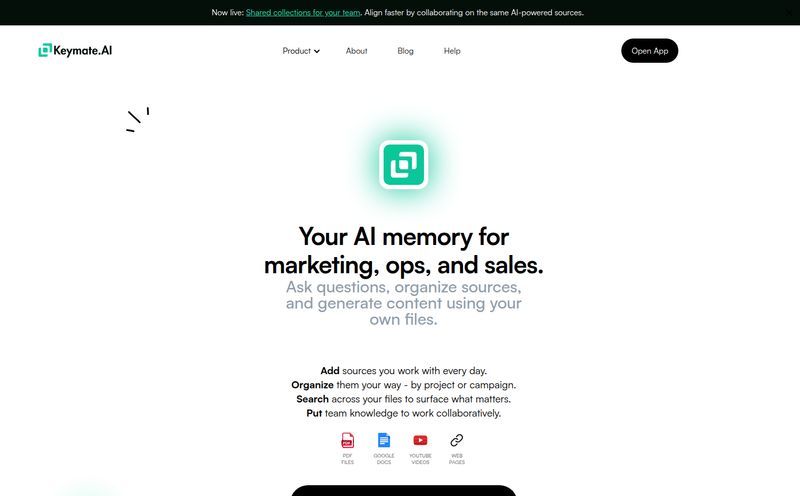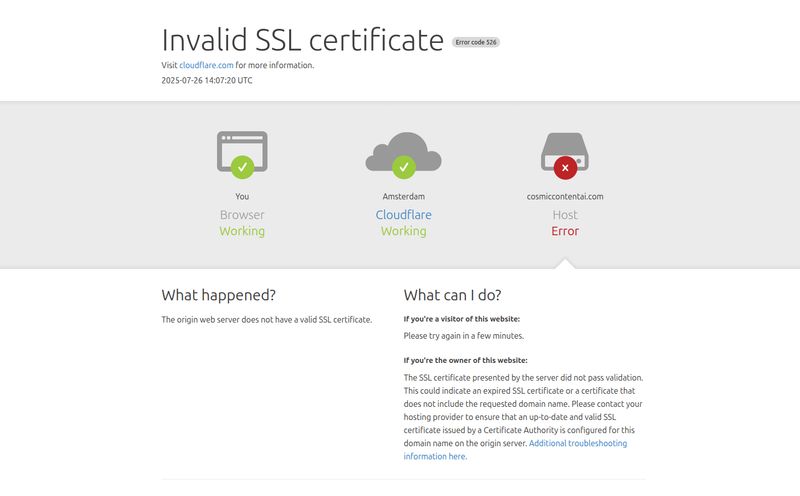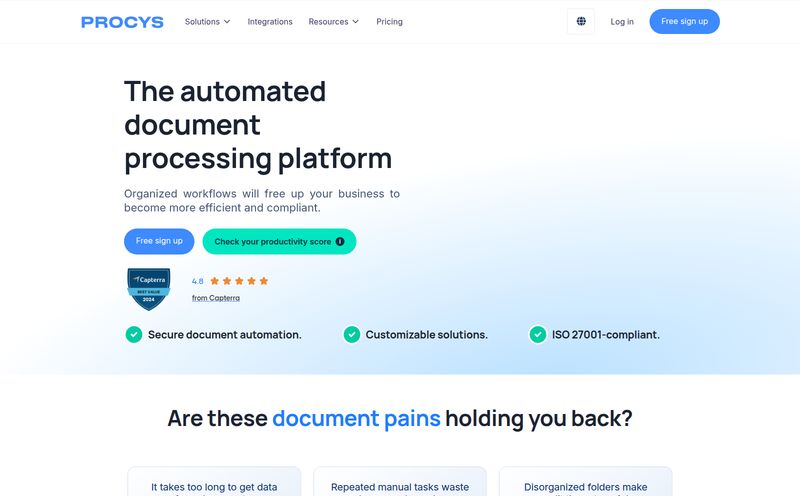Working with large language models can feel like the Wild West right now. One minute you’re experimenting with a cool new prompt on GPT-4, the next you’re staring at an invoice that makes your eyes water. You’re juggling APIs from OpenAI, Anthropic, maybe even a self-hosted Llama model. It’s a chaotic, expensive, and frankly, messy way to build anything serious.
I’ve been in the thick of it for years, and my bookmarks folder is a graveyard of “promising” AI tools that turned out to be vaporware. So when a platform like Trainkore lands on my radar, my default setting is skepticism. It claims to be a “prompting and RAG platform” for automating prompts and saving costs. Big claims. But after digging in, I’ve got to say... I’m intrigued.
This isn’t just another wrapper for an API. It feels more like a central command center, a proper workbench for anyone serious about building with AI. So, let's pull it apart and see if it holds up.

Visit Trainkore
So, What Exactly is Trainkore?
Forget the marketing jargon for a second. At its heart, Trainkore is a unified dashboard designed to solve the two biggest headaches in the AI space: runaway costs and operational chaos. It brings all your different LLMs under one roof and gives you tools to manage them intelligently. Think of it as a smart layer that sits between you and the AI models you use.
It’s built around core ideas like Retrieval-Augmented Generation (RAG), which basically means it helps your AI pull in real-time, relevant information to give you better answers. But the real magic, in my opinion, lies in how it automates the tricky parts.
The Features That Actually Move the Needle
Any platform can list a dozen features, but which ones actually solve a problem? I’ve seen enough to know what to look for. Here’s what stood out to me in Trainkore.
The Model Router: Your AI Cost-Cutting Co-pilot
This is the big one. The Model Router is designed to automatically select the most optimized model for any given task. Why is this a huge deal? Well, you don't need the brute force of a GPT-4 Turbo for a simple summarization task that a cheaper, faster model could handle just fine. The problem is, switching between them manually is a pain.
Trainkore claims this can generate prompts at 85% less cost. That’s a bold number, but the logic is sound. It’s like having a GPS that doesn't just find the fastest route, but also the one with the cheapest tolls. For any business running thousands or millions of API calls a month, this feature alone could justify the entire platform.
Prompt Versioning Isn't Just for Nerds
If you've ever tried to improve a prompt, you know the struggle. You tweak a word here, adjust a parameter there, and suddenly you have ten different versions of the same prompt saved in a chaotic text file named `prompt_final_v2_final_FINAL.txt`. It’s a disaster.
Trainkore brings proper version control to prompting. You can track changes, compare performance between versions, and fine-tune parameters like temperature or Top K in a structured way. It turns the art of prompt engineering into more of a science. This is one of those quality-of-life features that you don't realize you desperately need until you have it.
Observability: Finally Seeing What Your AI is Actually Doing
LLMs can often feel like a black box. You send a request in, you get a response out. But what happened in between? How long did it take? How much did that specific call cost? Which version of the prompt was used?
The observability suite in Trainkore gives you the logs and performance analysis to answer these questions. You can dig into input/output, latency, and metadata. This is critical for debugging when things go wrong and for optimizing when things go right. No more flying blind.
Breaking Down the Trainkore Pricing
Alright, let's talk about the cost. A tool can have all the bells and whistles in the world, but it has to make financial sense. Trainkore uses a tiered pricing model, which seems pretty standard these days. Here's my take on it.
They offer four main plans, with options for annual or monthly billing (annual is cheaper, of course):
- Freelancer Plan ($0/month): This is your 'try before you buy' tier. You get 50 calls a month and one seat. It's perfect for a solo developer or student who wants to kick the tires and see how the prompt playground works. It's limited, but it's free. Can't complain.
- Start Team Plan ($27/month, billed annually): This is where it gets serious. You get unlimited calls, prompt versioning, and priority support. This feels like the sweet spot for small teams or startups that are actively building a product with AI.
- Business Plan ($47/month, billed annually): The 'Popular' choice. This adds features that a growing business needs, like adjustable permissions, SSO (Single Sign-On), and bulk email sending. If you have multiple people with different roles interacting with the platform, this is likely your tier.
- Enterprise Plan ($87/month, billed annually): The whole enchilada. Dedicated account exec, on-premise installation options, and advanced team permissions. This is for established companies that need maximum security, support, and control.
Honestly, the pricing seems pretty reasonable for the problems it's solving. The free tier is generous enough to actually build a small proof-of-concept, which I appreciate.
The Good, The Bad, and The 'Coming Soon'
No tool is perfect, right? Trainkore has a lot going for it, but there are a few things to keep in mind.
The biggest strength is clearly the potential for cost savings and streamlined performance. That unified dashboard, the model router, and the versioning—these are powerful, practical features that address real pain points. The user testimonials from places like Samsung and Disney also add a lot of credibility.
On the flip side, the documentation suggests you'll need a bit of coding knowledge to get fully integrated (Node.js, Python, etc.). This isn't really a 'con' for the target audience of developers, but it's not a no-code-click-a-button solution for a total beginner. Also, a few features are still marked as “Coming Soon,” which is always a bit of a gamble. You're buying into the roadmap as much as the current product. My only other question is the full extent of supported models. They list the big ones, but for teams experimenting with more niche or open-source alternatives, more clarity would be great.
So, Who Is This Actually For?
After spending time with it, I have a pretty clear idea of who needs to check out Trainkore. If you're a solo dev just playing with ChatGPT, this is probably overkill. Stick with your text files and enjoy the chaos.
But if you're part of a team building an AI-powered application, or a business whose bottom line is affected by API call costs, then Trainkore starts to look less like a 'nice-to-have' and more like a 'need-to-have'. It's for the people who have moved past the initial 'wow' phase of AI and are now in the 'how do we make this scalable, reliable, and affordable?' phase.
It’s for the AI engineer tired of juggling API keys, the product manager trying to forecast AI budget, and the startup founder who needs to make every dollar count.
Frequently Asked Questions
What is Trainkore in simple terms?
Think of it as a central control panel for all the different AI language models you use. It helps you manage prompts, automatically pick the cheapest model for a job, and track performance to save you money and headaches.
Does Trainkore really save you money?
Yes, that's one of its main selling points. The 'Model Router' feature is designed to automatically use the most cost-effective AI model for each task, which can significantly reduce your monthly API bills.
Do I need to be a developer to use Trainkore?
While the dashboard is user-friendly, integrating it fully into your applications will likely require some coding knowledge (like Python or Node.js). It's primarily built for a more technical audience.
Is my data safe with Trainkore?
According to their FAQ, they take privacy and data protection seriously. They use industry-standard encryption methods to ensure user data remains secure and private. For maximum security, the Enterprise plan even offers on-premise installation.
Can I cancel my subscription easily?
Yes. They state you can cancel your account at any time. The cancellation takes effect at the end of your current billing cycle, so you won't be charged again.
The Final Verdict
I see a lot of tools. Most are forgettable. Trainkore isn't. It's a thoughtful, well-designed platform that tackles the unglamorous but incredibly important backend work of building with AI. It’s not just adding another layer of complexity; it’s designed to manage the existing complexity that teams are already drowning in.
While it's not a magic wand, it’s a powerful Swiss Army knife for LLM operations. If you’re feeling the financial and logistical strain of the current AI ecosystem, you owe it to yourself—and your budget—to give their free plan a spin. It just might be the command center you were looking for.
References and Sources
- Trainkore Official Website: trainkore.com



